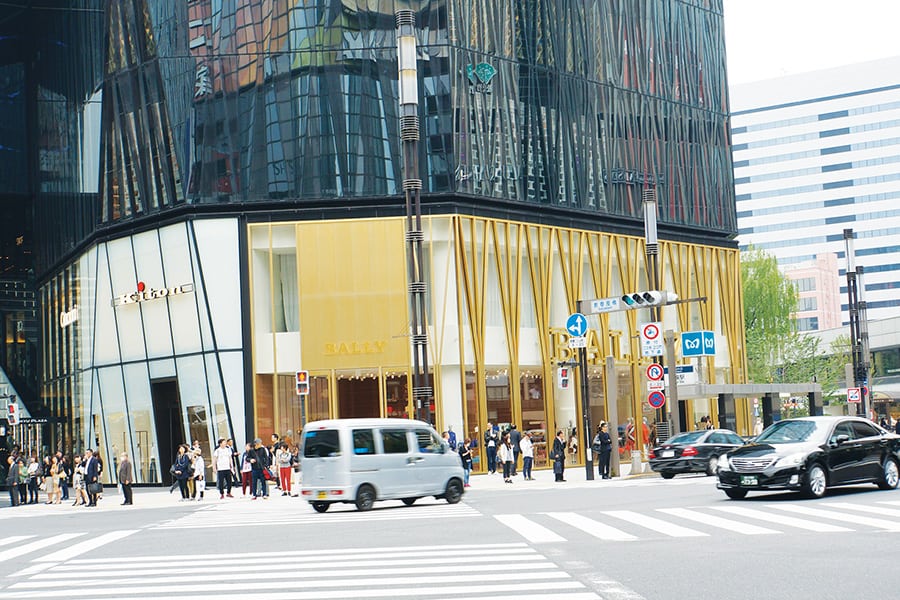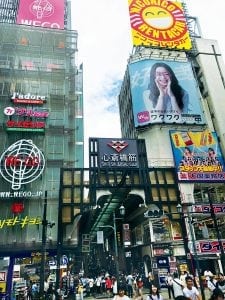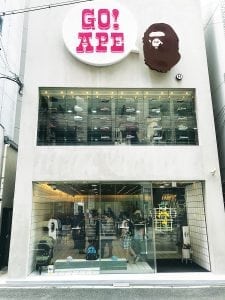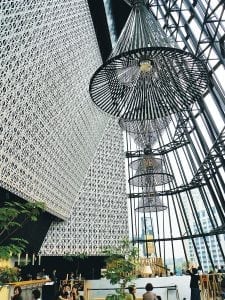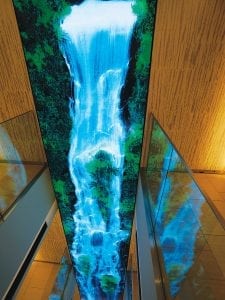Ian Ringrose recently joined the Large Format Retail Association Study Tour of Osaka and Tokyo in Japan. Are there lessons to be learned from a different type of retail in a vastly different market? Ian’s tour diary provides some interesting insights.
Day 1
I land in Japan expecting my head to spin in cultural shock. I didn’t expect a typhoon. And so began an unpredictable week.
I arrive in Osaka at 5am – around six hours later than scheduled. The nearby typhoon results in my flight from Tokyo being cancelled and our bullet train trip suspended, leading to an eight-hour trip on a regular train to get to our starting point. I do my best to suppress comparisons to Sydney Trains at this early juncture.
Tiredness and jetlag quickly take a back seat as we’re immersed in Osaka’s central retail district. A walking tour of the local area is like another world. There’s retail everywhere. The neon lights of Dotonbori blur the senses as an enormous array of bars and restaurants co-exist with specialty retail interwoven with large format outlets. The lack of segmentation is striking.
We receive an interesting market overview from consumer sector leader Toru Koyama of PwC and visit a range of Japanese and global flagships.
The week is off to a dizzying start.
- Day 1: Osaka
Day 2
A sneaky early visit to Osaka Castle is too good an opportunity to pass up. Marvelling at one of Japan’s most famous landmarks proves a great way to start the day.
Then it’s off to the Grand Front Osaka, an impressive redevelopment of a former railyard. It integrates Osaka Station and multiple towers including an InterContinental Hotel with shops and restaurants, including a heavy focus on food and beverage and experiential retail. It’s Japan’s biggest mixed-use retail development, with 266 diverse shops covering everything from fashion magazines, lifestyle goods, and beauty supplies to cafés, restaurants and bars. Its sheer size is breathtaking.
Part of the development is the Knowledge Capital, where people of all ages are encouraged to try out cutting edge technology, products and services. Inside, there’s a Future Life Showroom where experiences are merged with the concepts of lifestyle shopping and experiential retail.
This is an idea gaining traction in Australia but seeing it realised on such a grand scale in real time is stimulating.
We also tour MUJI Osaka, the largest MUJI store in western Japan, where management describes the lifestyle nature and sustainability quality of their products and how they relate to their specific Japanese target markets.
Smart Camp is a café within Grand Front that grows its own produce on site, a trend that’s springing up in various projects closer to home.
Above Osaka Station, Yodobashi Camera is an enormous large format electronics store that extends from the second basement level to the fifth floor, with a huge range and low prices serving domestic customers and visitors from the Asian mainland and beyond. The store includes four storeys of parking – on top of the retail space.
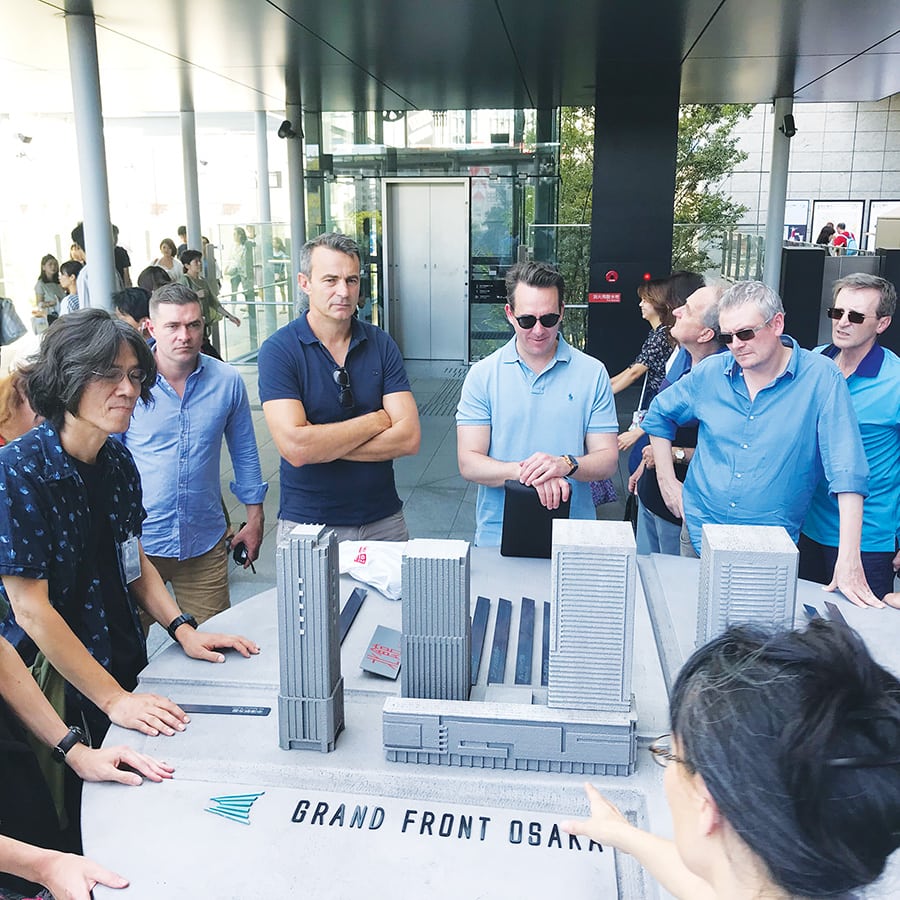
Day 2: Osaka
Day 3
Still in Osaka, I encounter some familiarity today in an otherwise unfamiliar retail landscape. Super Viva Home Plus invites comparisons to an Australian large format retail offer, with a huge product offering targeted largely towards the home improvement and renovator market.
We visited Rinku Premium Outlets, a US style outlet mall. Here, there’s a selection of outlet stores and large format retail stores, namely Sports Depot, Yamada Denki and Nitori Furniture.
Next is Kohnan Power Tennoji, a large format retail offering with a home improvement focus, as well as Golf 5 and Pets Plaza. Then it’s off to another large format retail centre showcasing home improvement outlet Cainz and Edion electronics.
A particular highlight of the day is the observation deck of Abeno Harukas, the tallest building in Japan, with its roof garden and bar. At 300 metres, it’s not for those afraid of heights.
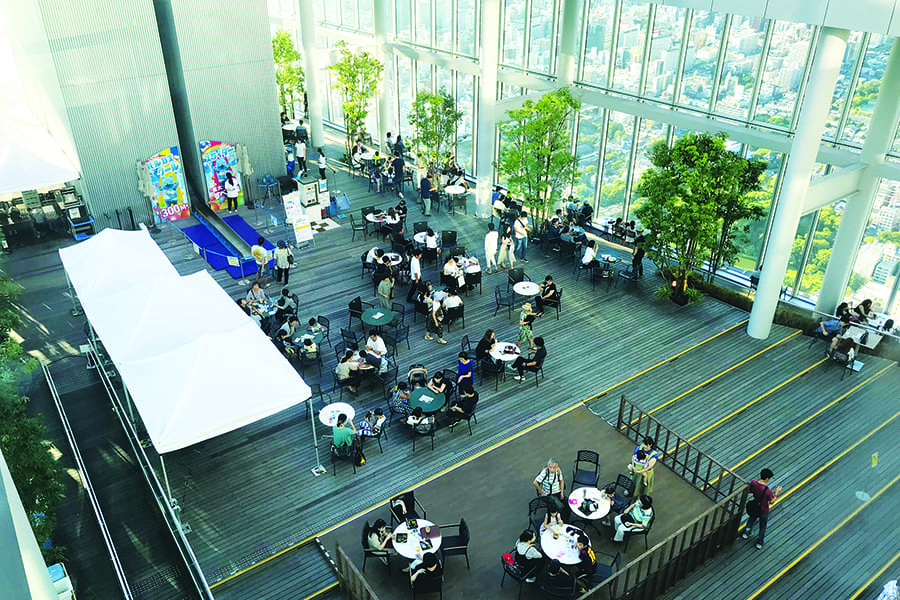
Day 3: Abeno Harukas, Osaka
Day 4
We’re headed for the capital. The bullet train to Tokyo is an experience in itself. Again, the public transport comparisons to Sydney are best left alone.
Upon arrival in Tokyo Station we start with a walking tour of the Ginza area, where the design of retail offers in smaller spaces and vertical formats is evident.
Retail centres and flagship stores like Muji Yurakucho, Tokyu Hands, Apple Ginza , Nissan, Uniqlo, Tokyu Plaza, Dover Street Market and LABI Yamada Denki Shinbashi are packed with people. In the mix are very high-end stores from all over the world combined with an emerging presence of lifestyle and experiential stores.
Special thanks to the CBRE team, which provided a detailed overview of the Japanese retail market from the comfort of its Tokyo headquarters. Unsurprisingly, the sheer size of the market dwarfs the Australian retail sector, but in the design and construction of leading large format retail stores and centres, we have a point of reference to work with as our cities evolve.
Day 5
In the western suburbs of Tokyo we find Cainz Home Improvement Centre where the Cainz team kindly gives us a store tour. It’s a similar concept to Bunnings but with an increased interiors and furnishings offering, and a separate ‘Pro’ store for trade sales. Hugely popular, huge turnover.
It’s then on to Joyful Honda Home centre in Mizuho, a colossal home improvement centre (a 107,900m2 site with 49,000m2 of sales space and 2,580 car parking spaces). Next is Mori Park Outdoor Village, a new style experience-based outlet for outdoor goods and adventure activities. North Face, A&F Country, Jack Wolfskin and Mont Bell are part of the mix. The centre includes a mini-trekking course and lots of green areas, including a pond and two climbing walls. Again, it’s that experience focus taken to a new level, with its niche being an outdoors charm. Very cool.
We then return to Tokyo and visit Ginza 6, a recently completed super-high end retail mall. Stunning architecture combined with a very fluid approach to shopfronts and leasing lines. You feel like each tenancy is part of the mall, and the concept is designed to replicate the alleyways of Ginza. An amazing roof garden is also available to the public. Incredible place.
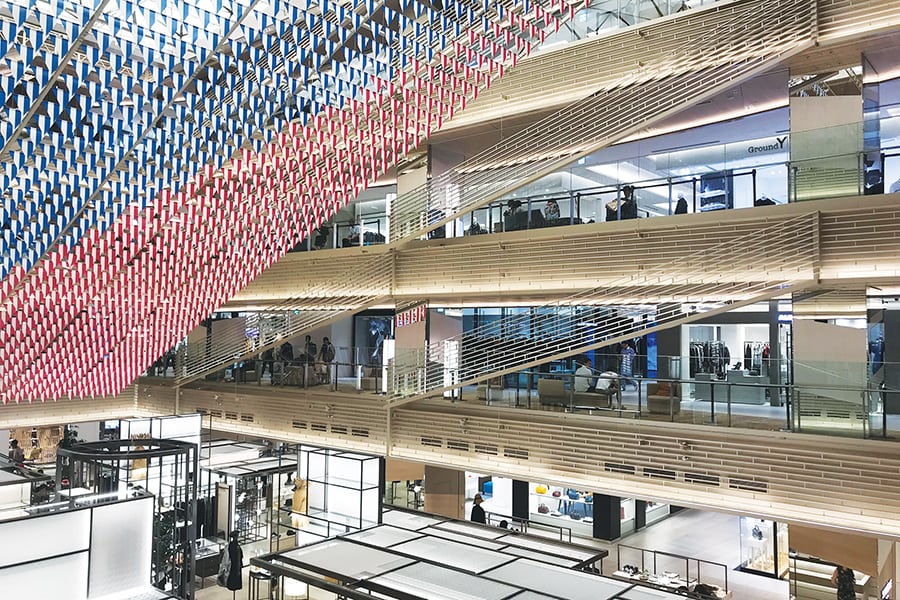
Day 5: Tokyo
Day 6
Today we venture north of Tokyo CBD to the Tokyo Skytree. The high-rise tower is a hub for terrestrial digital TV and radio broadcasting as well as an impressive observation tower. It’s the second tallest freestanding structure in the world, after the Burj Khalifa. Two observation decks at 350m and 450m should have afforded spectacular views across the city – if it wasn’t shrouded in cloud.
We then depart for LaLaport Urban Dock, a redevelopment of an old shipyard into a mixed-use centre, incorporating a radio station and museum with more than 440 speciality stores. Another take on what mixed-use can mean.
A short walk away we met LIXIL management for a tour of the impressive Super Viva Home, a one-stop-shop for renovations and remodelling that fills a gap in the market left by the decreasing number of local suppliers.
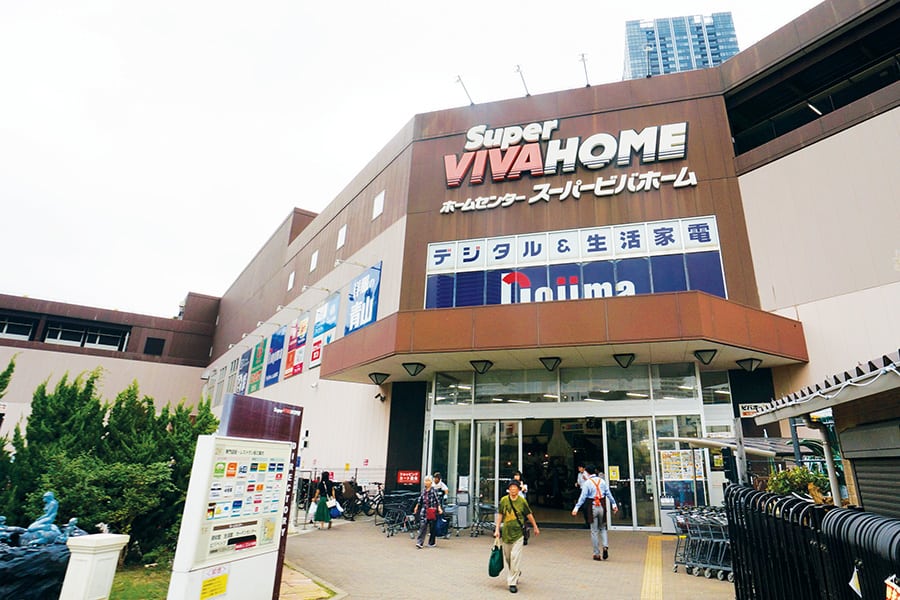
Our final stop for the day was the Toyota Mega-Web, a car theme park made up of three different facilities, where you can ‘look’, ‘ride’ and ‘feel’ the automobile. It’s a great facility that takes you on a journey from heritage models through to cars of the future. A great example of an experiential showroom.
Day 7
For those who made it, the day started early with a walking tour of the famous Tokyo fish markets. If you have saké the night before, you’ll need a strong stomach for this amazing institution.
After this was an epic journey through some of Tokyo’s most famous districts, starting in Shibuya Hikarie, a huge mixed-use, transit-orientated development. The building stack consists of blocks defined by function, including a 2,000 seat theatre for Broadway shows, two event halls, creative spaces, restaurants, shops and other commercial facilities. It encourages office workers to mingle with shoppers.
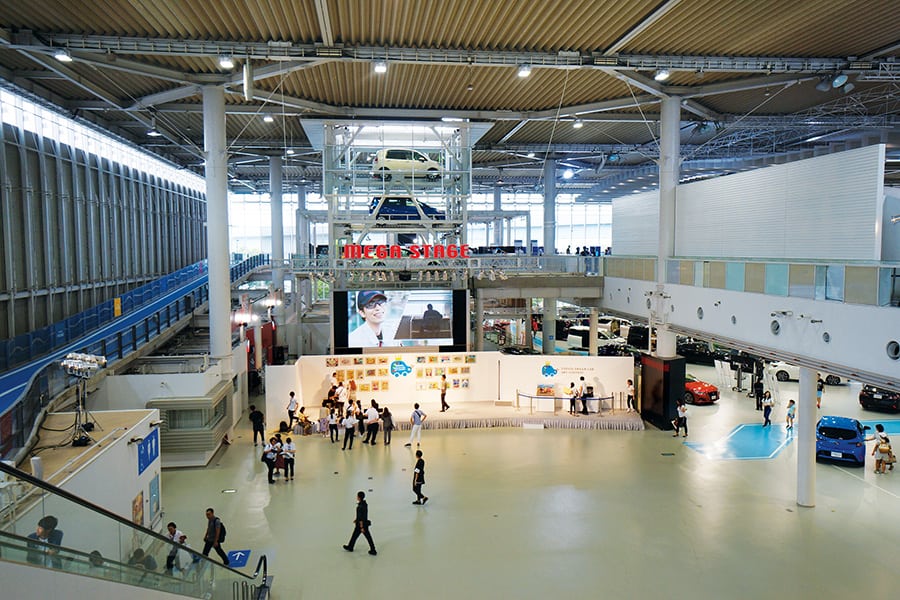
Day 7: Tokyo
For the remainder of the 25,000+ steps of the day we visited the impressive district of Harajuku, Cat Street and Omotesando Avenue, which was a feast for the eyes. We squeezed in Tokyo mid-town and Roppongi Hills before heading to dinner.
The tour provided valuable insights into how retail can work vertically in high density areas, a very different model to the Australian market.
We saw some of the best shops and shopfront control in the world and, in such a highly competitive visual environment, we could appreciate how good merchandising and simple communication was king.
We also took away the importance of large format retailers and the need for them to not only provide retail solutions, but community engagement and experiences for their customers as well.
Thanks to Phil Schoutrop at Buchan, as well as Philippa Kelly and Michelle Wong of the Large Format Retail Association, for bringing this life-changing trip together.
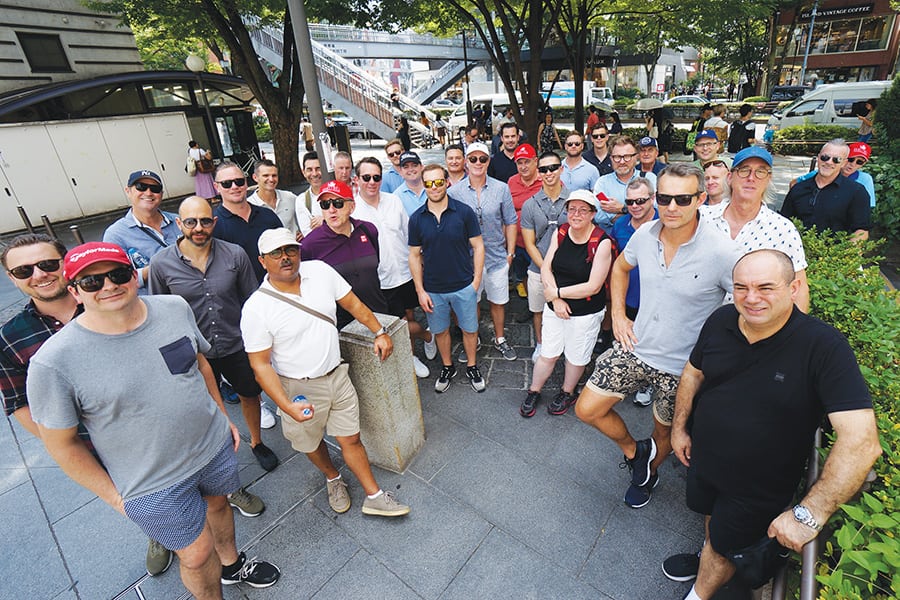
The Tour Group


